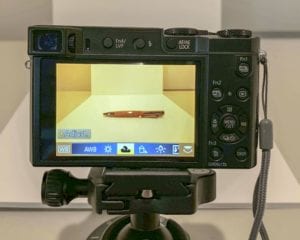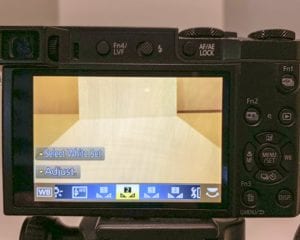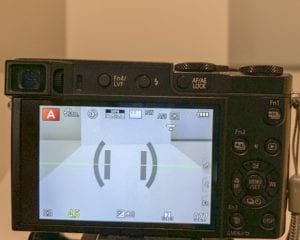Achieve Better Color Accuracy In Your Pen Photos
Have you noticed that with all the new energy-efficient bulbs that are available these days there’s a lot more information on the boxes? Growing up we just had watts. If you wanted a bright light, you got 100-watt bulb. If you wanted something not so bright, you got a 60-watt bulb. So simple!
These days we’re faced with words like lumens and Kelvin and they even suggest mood, location, and activity where that light might be best suited for. They even list wattage equivalent to translate for old folks like me that remember a simpler time.
Before getting into photography I was aware that there were different types of lights and bulbs but I never paid much attention to any of it. I suspect you didn’t either. This is because our brains are really excellent at translating colors for us in different lighting conditions. You know what’s not as good at translating colors in different lighting as our brains? Our cameras. And that my friends is why we have White Balance.
 Back of a light bulb box
Back of a light bulb box
What exactly is White Balance?
According to Nikon: White Balance is used to adjust colors to match the color of the light source so that white objects appear white.
You don’t have to dig too deep before you discover that White Balance in photography is synonymous with Color Temperature. Color Temperature is measured in Kelvin (e.g. 2700K). Color temperatures over 5000K are called “cool,” while temperatures in the 2700K-3000K are referred to as “warm” light. This warm and cool light can really change how colors appear in your photo.
For our purpose of photographing pens, we need to tell the camera “Hey! In this type of light, this is white.” Do you remember the JPG vs RAW blog post where I told you about the elves in the camera that make all the decisions? Those same elves are in there making decisions about White Balance too. Problem is they’re stuck inside the camera so you gotta help ’em out by telling them what kind of light you’re in. They’ll take care of the rest.
 JPG elves setting white balance inside camera
JPG elves setting white balance inside camera
Why should I care about all this talk about White Balance and Color Temperature?
Take a look at these three photos. This is the same photograph, each captured with a different White Balance setting.
 Fluorescent
Fluorescent
 Manually set
Manually set
 Incandescent
Incandescent
If I didn’t post all these pictures together and you only saw one of them at a time you might think it was okay but all together it’s pretty obvious that the colors are off. Suppose I posted the picture taken with White Balance set to Tungsten and someone bought that pen expecting the pen to be somewhat blue. This is not a very extreme example but you can see how this can be a problem, right? Think of the huge array of colors in the wood and acrylics and even the metal platings of the pen kits.
The biggest reason we set the White Balance is to get the colors in our pen photos as accurate as possible, this adds credibility to our products and builds trust with the customer.
It would be pretty embarrassing to have to explain why the color of the pen the customer purchased is different from what they saw online. This may result in a refund or a bad store review or both. Of course, there are still other factors beyond our control on the user’s end, such as how that individual perceives color, how their monitor renders colors, etc. To address that, many online vendors will post a color disclaimer stating that they’ve done their best to show accurate colors of their products.
The biggest reason we set the White Balance is to get the colors in our pen photos as accurate as possible, this adds credibility to our products and builds trust with the customer. We should all strive for that.
How do you set the White Balance on your camera?
In short, it depends.
The chart below is from the user manual for my Panasonic Lumix and shows the available White Balance settings. Some cameras have more settings and some have less so you’ll have to refer to your manual. Or check YouTube, there’s probably a video of someone showing how to set the White Balance on your exact camera.
 Lumix ZS-100 White Balance Settings
Lumix ZS-100 White Balance Settings
A lot of newer cameras are totally menu driven so you’ll have to refer to your user manual to find the White Balance settings. One thing I look for when purchasing a camera is the controls that are available to me without having to dive deep into a digital menu. As you can see, the Panasonic Lumix I’m using has a WB button there on the right.
Take the time to set the White Balance to the appropriate setting for your lighting conditions so you can achieve better color results. Pens kits have a lot of intricate details and the colors in the metal plating, wood, and acrylics are difficult to explain, accurate photography allows our customers to see it with their own eyes.

Change White Balance settings
Below are a few pictures where I cycled through different White Balance settings. As you can see it makes obvious changes.






Pen kits have a lot of intricate details and the colors in the metal plating, wood, and acrylics are difficult to explain, accurate photography allows our customers to see it with their own eyes.
My Favorite White Balance Setting
My favorite way is to manually White Balance in the camera. This is basically done the same in all cameras that have this ability and all you do is take a picture of something white in the setting you’re in.
There are certain tools available for this, things like Expo Disc and White Cards or Gray Cards. I photograph a lot of my pens on a white background so I just use that for my setting.
 Manual WB Setting
Manual WB Setting
 Choose white object
Choose white object
 Manually set White Balance
Manually set White Balance
Can White Balance be fixed in Photoshop?
Yes, but just because you can doesn’t mean you should. It’s better to get as much correct in the camera while taking the pictures so that you spend less time at the computer editing photos. That way you can make more pens to sell. See how that works?
Photoshop (including Photoshop Elements) and Lightroom will let you change the white balance if you shoot in RAW format (Click here to learn about JPG & RAW formats). In fact, the same White Balance settings that are in your camera will appear in Photoshop if you shoot in RAW. If you shoot in JPG mode you’ll only have a couple options in the White Balance dropdown but you can still change the temperature and tint.
 Camera RAW White Balance settings
Camera RAW White Balance settings
 Camera RAW settings for JPG image
Camera RAW settings for JPG image
Wrapping Up
Learning about White Balance can get pretty technical and you can totally drown in all the science about color temperature and light. Hopefully, you see that it’s an easy concept to grasp and all you have to do is tell your camera what light you’re in and it will take care of the rest.
I also hope that you understand how properly setting the White Balance can help your color accuracy and improve your online sales by earning customer trust.









I don’t know a lot about cameras, but this was very useful! thanks for sharing!
Theses are great tips, I love photography and I’m always excited to learn more about it.
You really have good knowledge about what you do. Thanks for sharing.
Great tutorial! I am sure savvy cam users will need this info!
It’s amazing how good you are with these things. Great post.
it’s probably best that I don’t start futzing around with the settings on the camera too much ???? I suppose there is always that “return to default” thingy if ???? goes awry. ????
I had no idea about white balance, used to click the pictures without knowing all of this. Thanks for sharing.
The auto white balance capabilities of modern cameras are really awesome. What makes it important here is for folks selling items online to ensure the product a buyer receives is the color it was in the product photos. Thanks for reading!
Such an informative post, this is awesome. Thanks for sharing
I knew professional photography was technical, but this is a whole lot of new information for me. Nicely written too!
I own a Nikon and always operate using only a few buttons and settings. Now I know more than I used to and it feels so good 🙂
I love photography but dont know a lot about cameras. This was very useful!
OMG thank You for clearing this out. I finally know!!!
I love doing and learning new ways of photography but I haven’t got a chance yet. This is a helpful post especially for those who do photography.
I’m not so into photography. But it is easy to understand…